I’ve finally returned from my crazy Aeroplan trip around the world last week. To be honest with you, after doing two Aeroplan Mini-RTWs in quick succession, I’m pretty “Mini-RTW’ed out” for now and ready to stay put in Toronto for a little while.
I’ve already shared with you the impressions from the first part of the trip, so we’ll carry on right where we left off with the highlights from the return journey home on the incredible United Island Hopper by way of Guam, the Federated States of Micronesia, the Marshall Islands, and Hawaii.
Buckle up, because this was one hell of a ride.
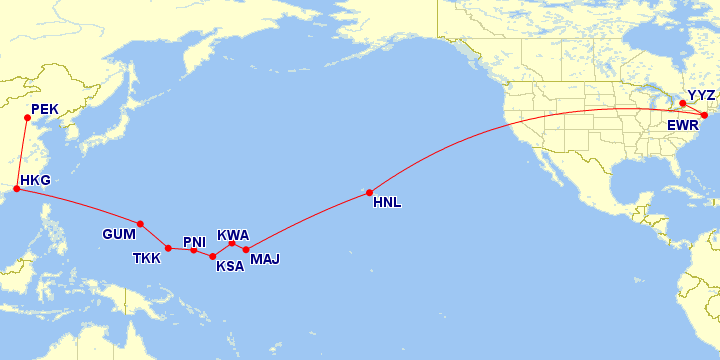
Chinese New Year in Beijing
It was great to ring in the New Year with my family, a privilege I haven’t enjoyed since moving to Toronto in 2012. Besides recovering from the jet lag, feasting on dumplings, and deflecting my family members’ questions on when I’m getting married, the only thing of note that I did was visit the New Year’s temple fair at the Temple of Earth in Beijing.
[foogallery id=”16889″]
I used to attend these fairs every year when I was little, so it was awesome to make it back for another visit and rekindle those childhood memories. The temple fairs typically start on the first day of the New Year and lasts for a week or so. Everyone heads out with their families to watch the cultural performances, snack on delicious street food, and enjoy the festive atmosphere.
If you ever find yourself in or around Asia during the Lunar New Year, I’d highly recommend checking these out. Just be prepared to encounter lots of people – get those elbows ready for shuffling through the crowd!
Guam: The Island Hopper Begins
After five days in Beijing, I flew to Guam on a redeye flight from Hong Kong. While the entirety of my United Island Hopper had been originally booked in economy class, I did manage to get lucky on a few of the legs and secure business class space when it eventually opened up.
The Hong Kong–Guam flight was one of these legs where I got upgraded, but truth be told, the recliner seats on United’s 737s really aren’t great for sleeping, and I arrived in Guam in the early morning running on a mediocre four hours of sleep.
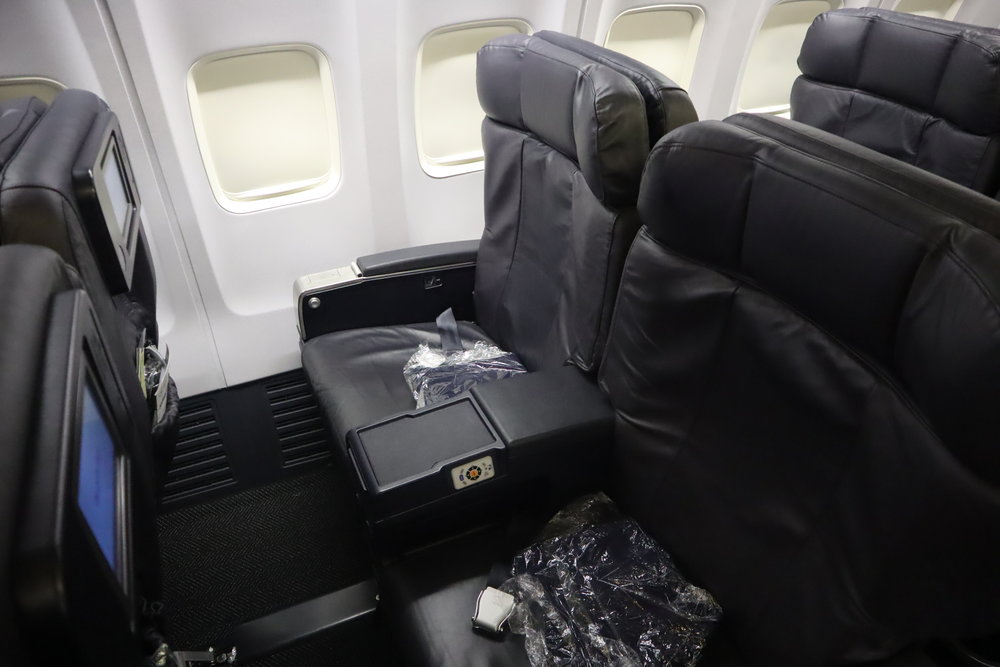
United 737 business class
Nevertheless, I only had until 8pm to explore the US territory, so I chugged a coffee and headed into town. Guam isn’t the easiest place to explore without renting a car – walking distances are quite challenging, taxi fares can get expensive, and public transport exists but can be rather unreliable.
I eventually decided to walk to Guam Premier Outlets, one of the busiest spots on the island, and then decide where to go from there.
Along the way, I couldn’t help but marvel at how “American” everything here looks – you’ve got the neat suburban houses, the sprawling outlet malls with an equally sprawling car park, and the gigantic Kmart (the world’s largest, in fact) visible directly from the airport.
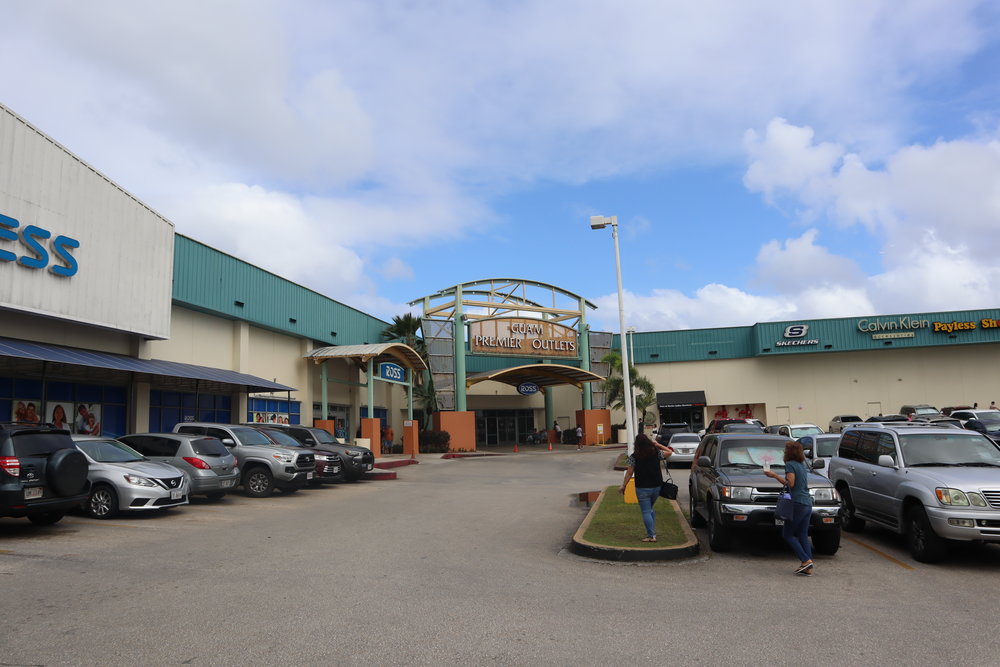
Guam Premier Outlets
The mix of cultures here on Guam is quite fascinating. Originally inhabited by the indigenous Chamorro people (an Austronesian people group related to the populations of Southeast Asia), Guam was first occupied by Spain, then taken by the United States in the Spanish–American War, then occupied by Japan during World War II. And nowadays, it’s a hugely popular tourist destination among the Japanese, given the proximity to East Asia.
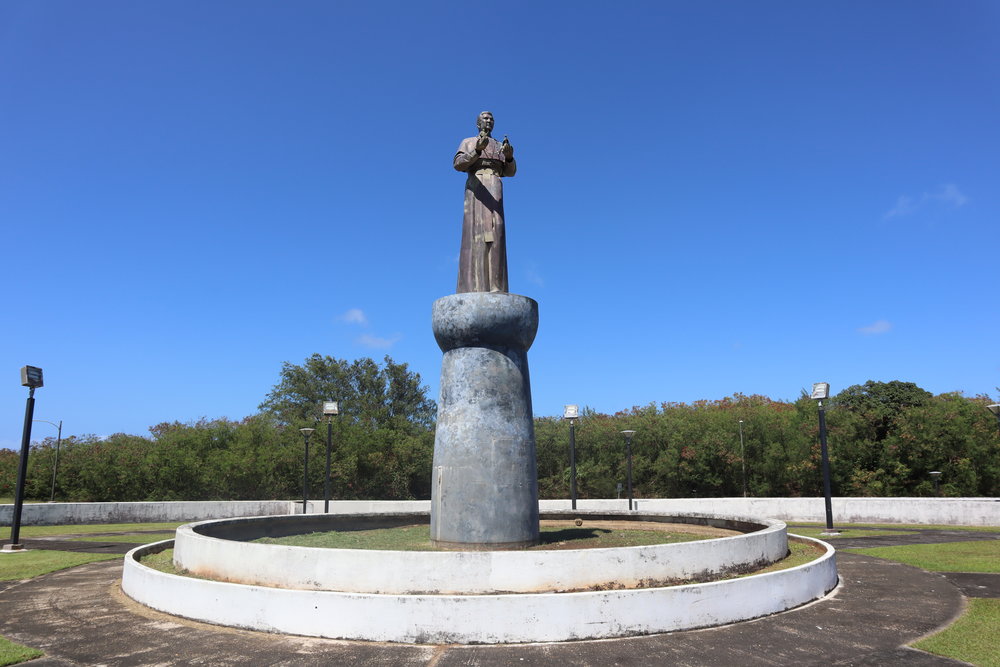

That explains why you might hear the locals incorporating Spanish loanwords in their Chamorro language as you jump on a tour bus that’s decked out in exclusively Japanese characters, as I did as I headed down to the resort area of Tumon to grab a quick lunch at the Hilton.
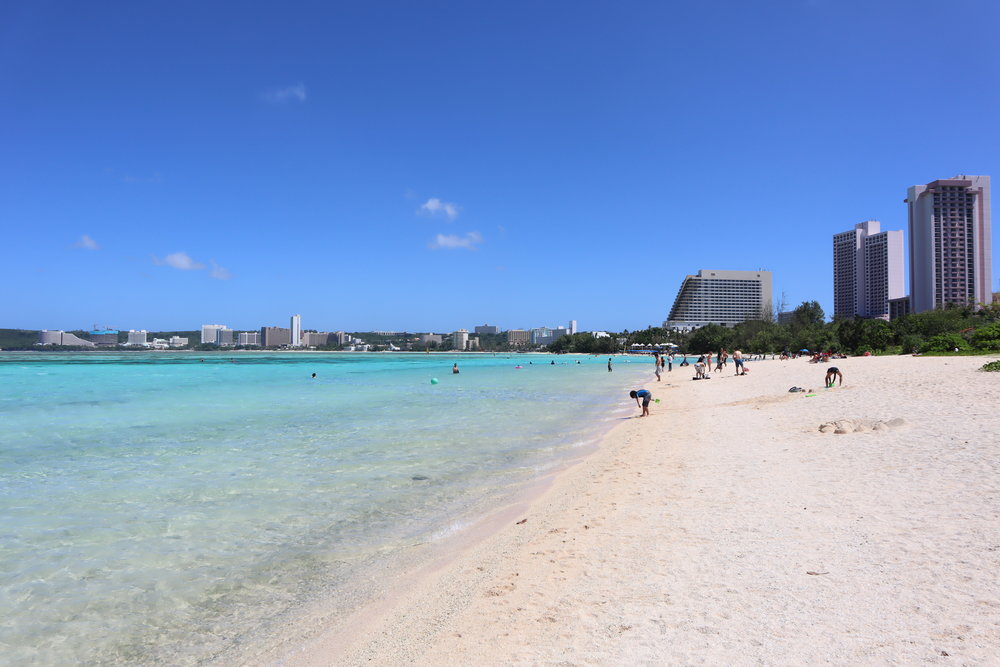
Tumon Beach, Guam
From the Hilton, I caught the bus to Two Lovers Point, a must-see attraction on Guam with unbelievable views of the nearby beach and surrounding Pacific Ocean.

Two Lovers Point, Guam
It was about 3pm by this point, and I was pretty exhausted, so I hired a taxi to take me back to the airport for US$25 and spent the rest of the time relaxing in the United Club lounge. At 8pm, my flight to Chuuk – again upgraded to business class – was ready to board.
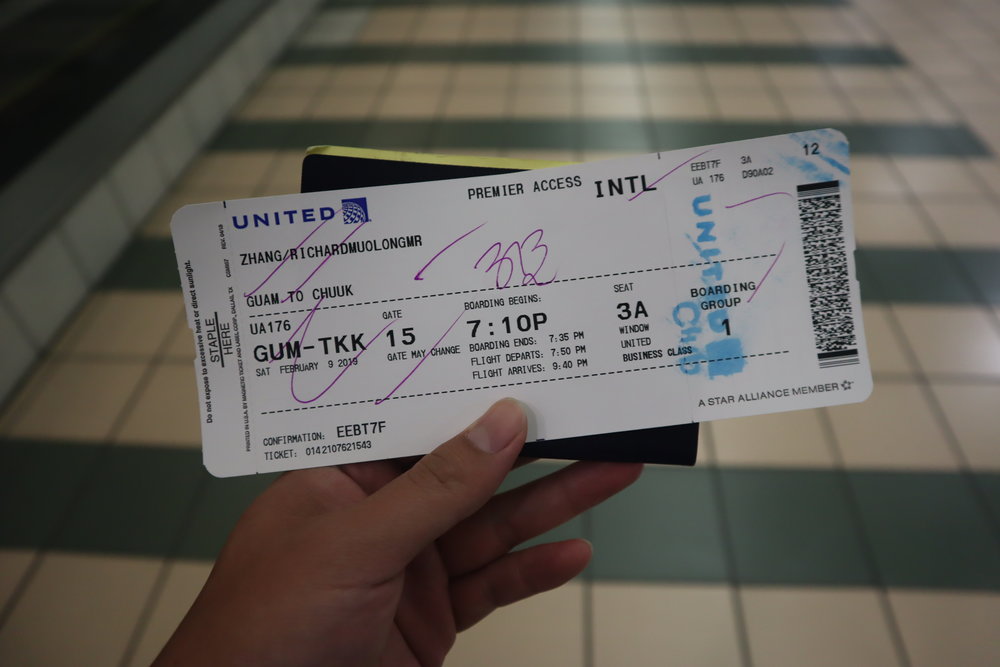
Boarding pass to Chuuk
Chuuk: The Chaotic Heart of the FSM
Landing at Chuuk Airport makes for quite the heart-in-mouth experience, since the airport’s notoriously short runway means that pilots must slam on the brakes as soon as they touch down. The effect is especially pronounced at nighttime, when the vast ocean surrounding the runway makes it impossible to tell how far you’ve descended as you’re looking out the window.
One moment it’s pitch-black outside, then all of a sudden the runway bursts into view, then you hear the almighty roar of the plane’s braking system kicking into its highest gear.
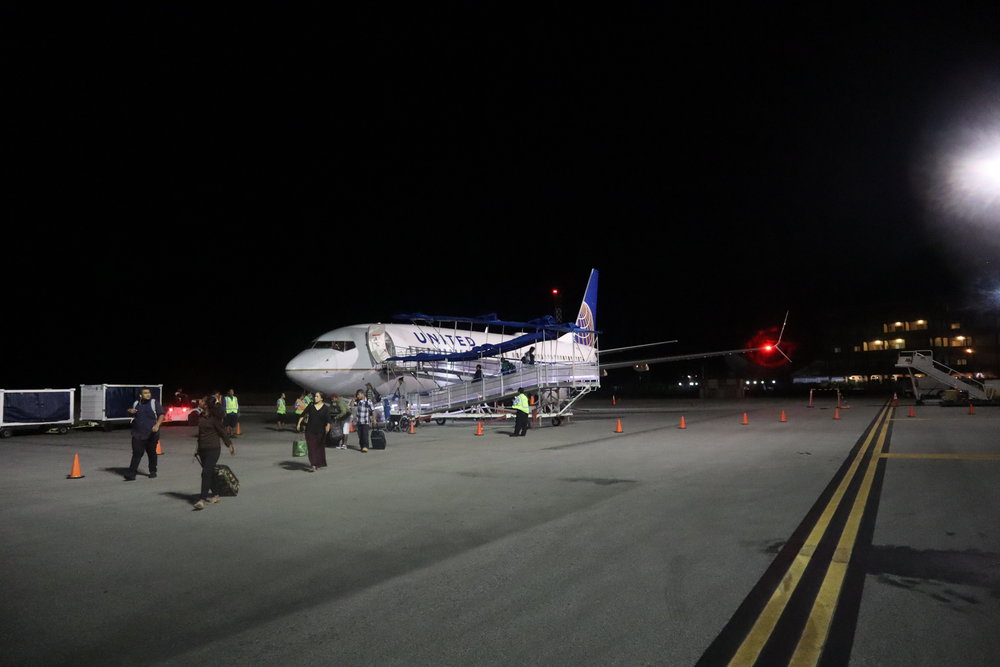
United 737 at Chuuk International Airport
For me, Micronesia was a whole new level of “foreignness” in terms of my travels around the world.
Sure, my Trans-Siberian Railway trip last year was hugely eye-opening, as was my visit to West Africa earlier on this same trip.
But most people could at least point out those places on a map. Chuuk? Pohnpei? The Federated States of Micronesia? Prior to this trip, I don’t even think I myself would’ve been able to confidently pick those places out on a map… and I love maps.
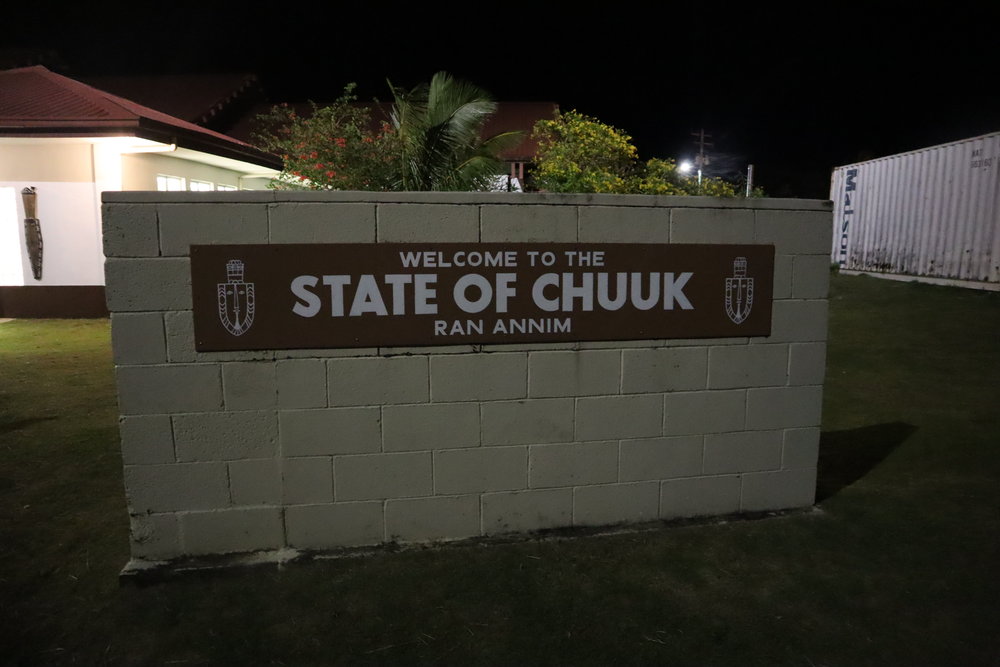
Welcome sign at Chuuk International Airport
So here’s some context: Chuuk, Pohnpei, Yap, and Kosrae form the four constituent states of the Federated States of Micronesia, a sovereign country with a compact of free association with the United States. That means that the US is responsible for national defence of the FSM, as well as providing high levels of domestic support (of which the United Island Hopper air service is one example).
Chuuk is the name of the state, as well as the main island on which I had landed. The island group is known for its incredible wreck diving – the Japanese used these islands as an outstation during World War II, so the opportunity to explore the sunken ships around Chuuk’s shallow reefs is highly coveted within the diving community.

Welcome to Chuuk sign
Besides diving enthusiasts, the island doesn’t see much tourism, and it’s mostly just the roughly 35,000 Chuukese inhabitants that you’ll find here. I instantly found myself face-to-face with many of them, since arrivals and departures on the Island Hopper service are quite a big deal here on Chuuk, with many of the locals are either sending off or welcoming their loved ones.
I had booked a night at the Blue Lagoon Dive Resort in Chuuk, by all accounts the best hotel on the island located on the opposite side of the airport. Chuuk isn’t a big island, but the six-mile drive took 30 minutes thanks to the terrible condition of the roads.
The rooms at the Blue Lagoon aren’t much to write home about. I was exhausted and quickly turned in for the night, hoping to wake up early and see as much of the island as I can before my 11am departure to Pohnpei.
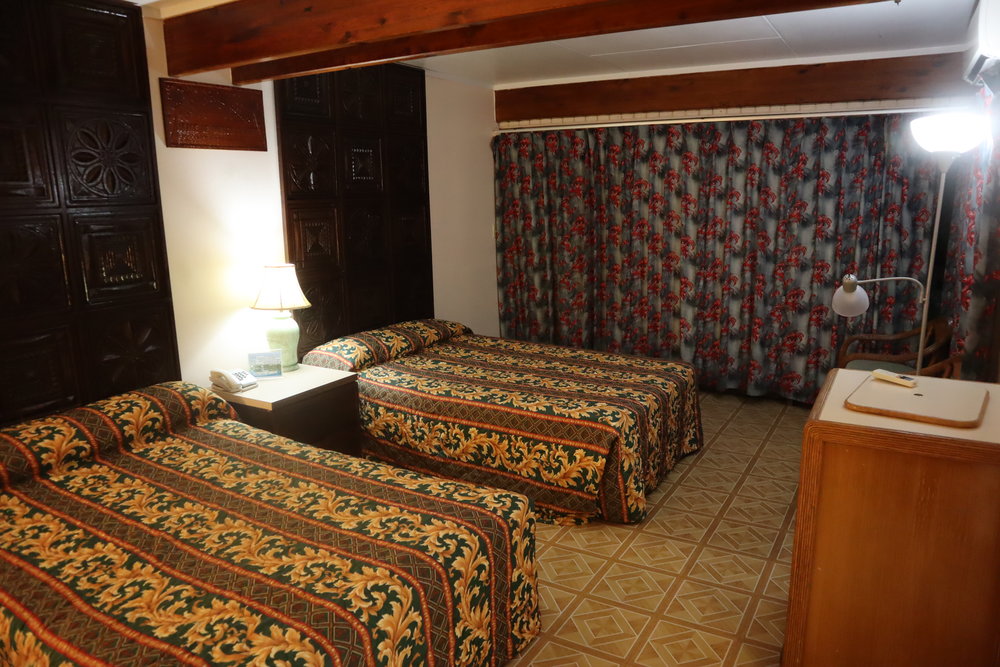
Blue Lagoon Dive Resort, Chuuk
The next morning, waking up just after sunrise, I was not prepared for the stunning scenery of the resort as soon as I opened my door!

Beach at the Blue Lagoon Dive Resort


Perched at the southern tip of the island, the Blue Lagoon boasts towering palm trees and the most incredible little beaches. And given the relatively few other guests at the resorts, these were basically my very own private beaches for the short duration of my stay!

Blue Lagoon Dive Resort, Chuuk
I sat by the water, contemplating the sheer vastness of the Pacific Ocean. While Chuuk is certainly not the most developed island destination one could visit, I reckon it’d still be lots of fun to spend a few days diving into the shipwrecks, taking the boats out to the neighbouring islands of Chuuk State, and hiking up the island to check out the wartime armaments that remain.
Alas, time was of the essence, and after a quick breakfast at the resort, it was time to go.
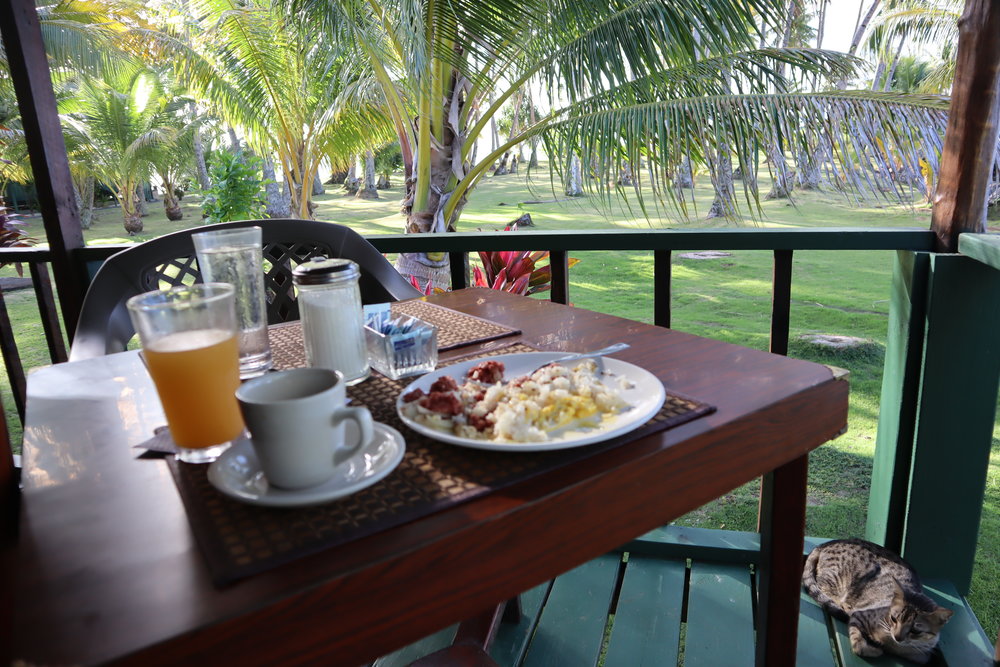
Breakfast with a friend
It’s a shame I didn’t get to walk around the rest of the island, but the daytime drive back to the airport did prove to be quite illuminating.

Street scene in “Downtown” Chuuk
I chatted with my Chuukese driver about daily life on the island; as he hinted at, and as I would later learn about in more detail, despite being the largest and most populous state of the FSM, Chuuk is a pretty run-down place with a history of social problems and developmental obstacles.
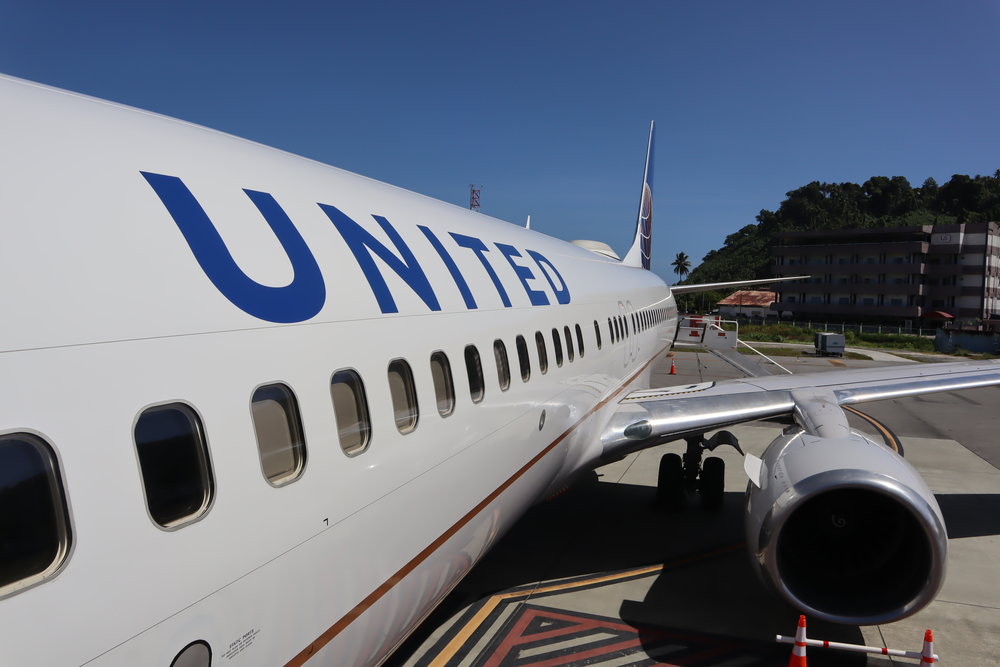
United 737 bringing me to Pohnpei
Plenty to contemplate onboard my one-hour flight over to Pohnpei…

Views on departure from Chuuk
Pohnpei: The Ancient & Modern Seat of Micronesia
Light rain greeted my mid-afternoon arrival in Pohnpei, the next stop on the United Island Hopper journey…
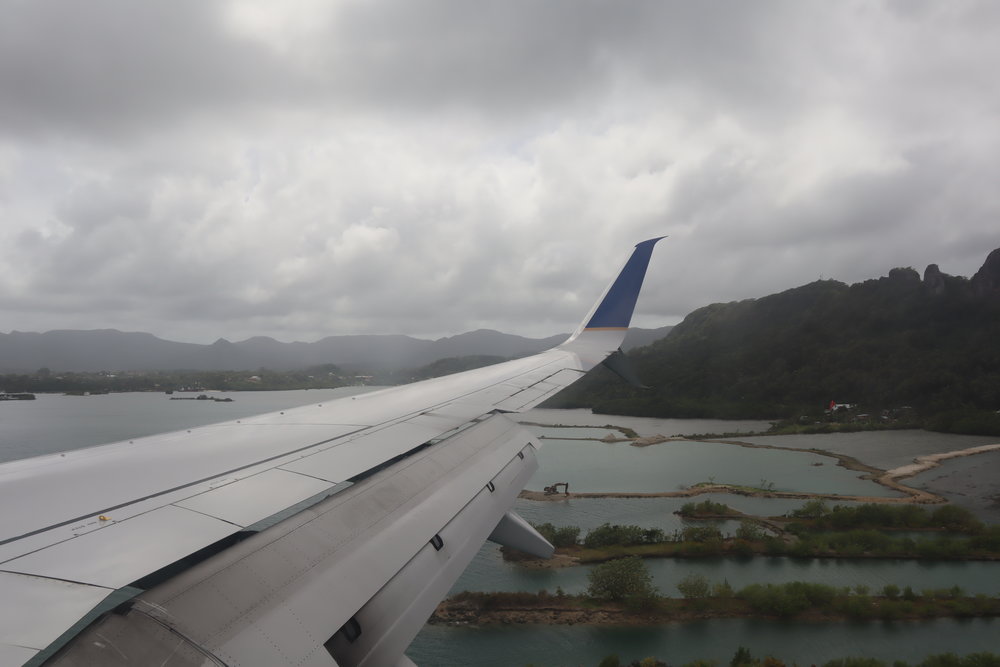
Views on approach to Pohnpei
As I exited the airport and looked around for a taxi to bring me to my hotel, I was approached by a kind American fellow who had gotten off the same plane, and he asked me if I needed any help.
Turns out, he was the President of the College of Micronesia, and he was happy to drive me to my hotel and even take me for a quick tour of the island! I was taken aback by his kindness, but gladly accepted the offer, and we embarked on a trip to see some of the highlights of Pohnpei that I might not otherwise get to see during my 24-hour stay.
It turns out that my new friend, Joe, has been working here for eight years and regularly helps out travellers whom he encounters at the airport. He brought me to Mangrove Bay, a small landing on the water in Kolonia, the main settlement on the island.

Mangrove Bay, Kolonia, Pohnpei
We also headed out to Palikir, the FSM’s capital, for a fascinating look into the executive and judicial seat of power of the modern-day FSM.

The road to Palikir, the capital
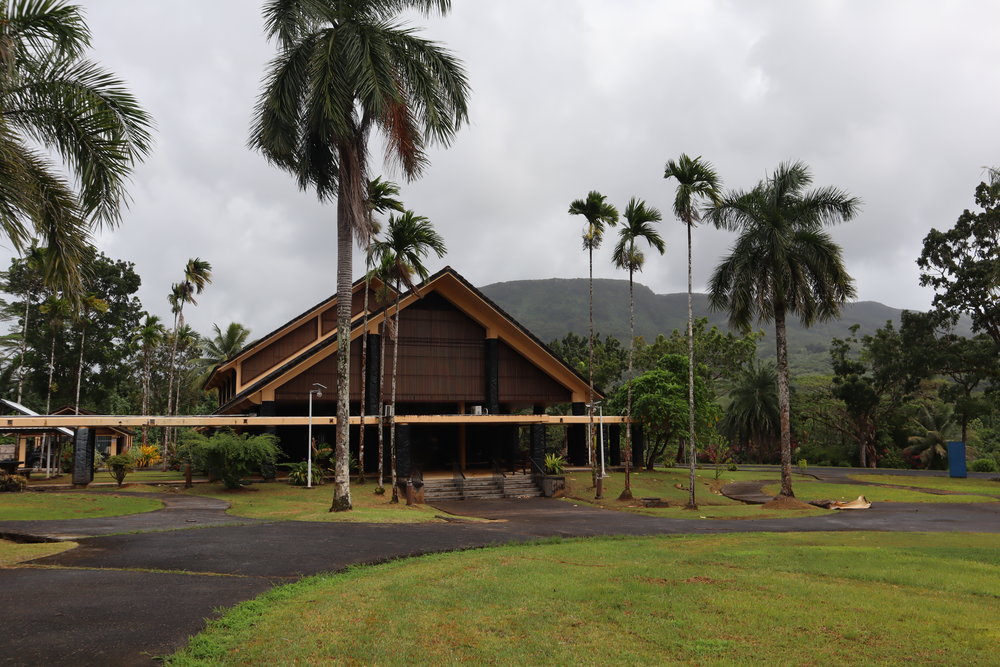
Supreme Court of the Federated States of Micronesia

Congressional Chamber of the Federated States of Micronesia
Along the way, we enjoyed an in-depth conversation on the history, peoples, and culture of the FSM. This is one of those places in the world that I simply hadn’t given much thought to, if any, so learning about it from a local was illuminating in the extreme.
At a glance, one can tell that Pohnpei is much more developed than Chuuk. Apparently that’s because the indigenous Pohnpeians developed an organized, hierarchical system of government as early as 1100 (known as the Saudeleur Dynasty), whereas the Chuukese population mainly consisted of tribal warriors, the legacy of which continues to permeate and impair the local government to this day.
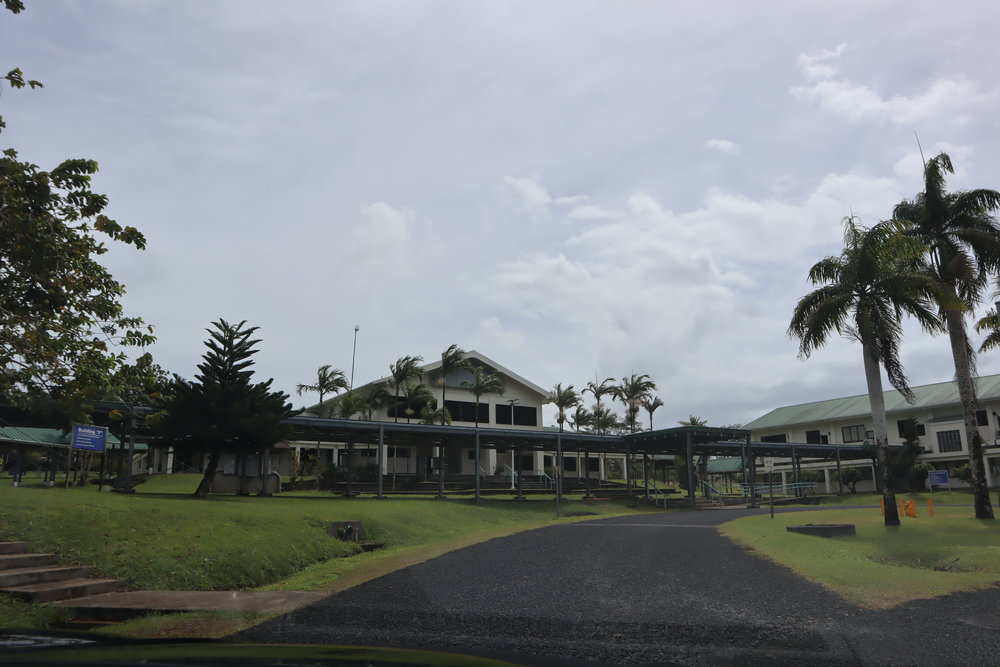
College of Micronesia main campus
Joe also educated me about traditional Yapese canoes and navigation skills (which inspired the logo of the College of Micronesia), the original occupation of Kosrae by Protestant missionaries (hence the 95% Protestant makeup of modern-day Kosraeans), and so much more.
Thanks to this chance encounter, I got so much out of my trip to Micronesia, and I’m much more inspired to come back for a return trip in the future. Serendipitous moments like these – that’s the beauty of travel, isn’t it?

Street scene in Kolonia, Pohnpei
Anyway, Joe eventually dropped me off at Yvonne’s Hotel, where I decided to relax and recharge for the rest of the day before embarking on a trip to the ancient ruins of Nan Madol the following day.
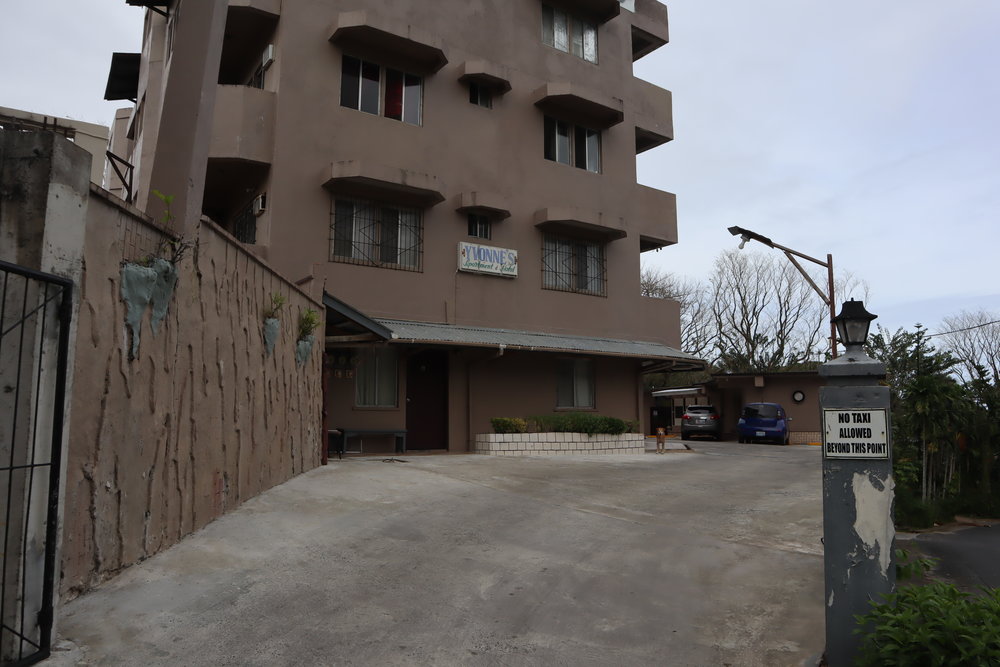
Yvonne’s Hotel, Pohnpei

Yvonne’s Hotel, Pohnpei
I enjoyed a few meals of delicious tuna sashimi – the FSM enjoys fishing rights throughout vast swathes of the Pacific Ocean, and so fresh tuna is cheap and plentiful!
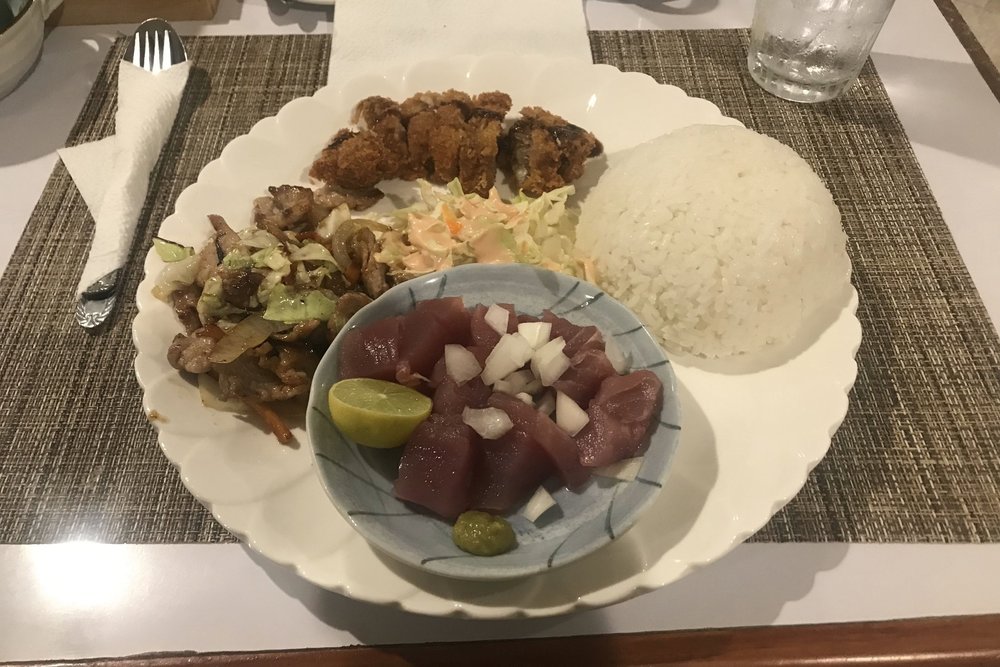
Cheap & fresh tuna sashimi dinner
Nan Madol, a series of rock formations emerging from the waters of eastern Pohnpei, is one of the world’s greatest archaeological mysteries.
We know that it was the seat of the Saudeleur Dynasty from 1100 to 1628, but very little is known about its construction, and more importantly how it was constructed.
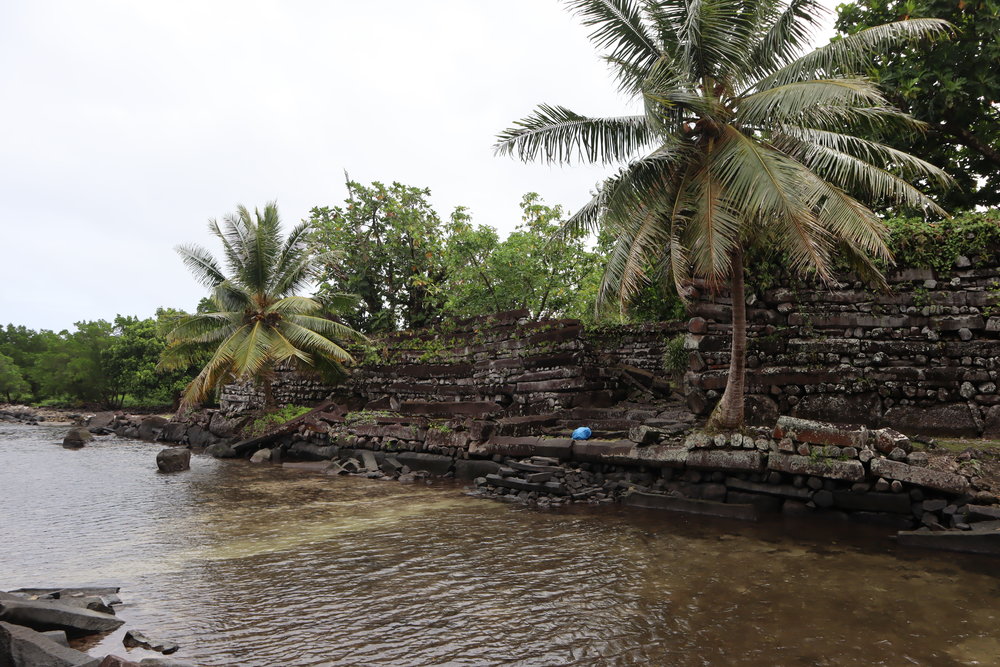
Nan Madol, Pohnpei

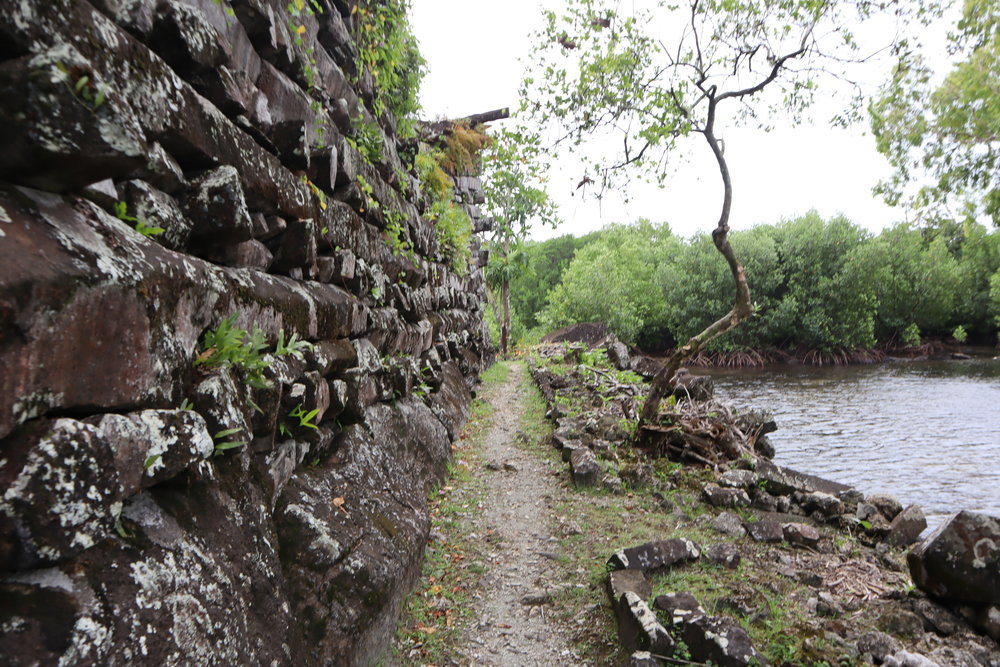
Pohnpeian legend, as repeated to me by the guide who brought me there, states that the huge rocks were lifted into place by two brothers with the help of a flying dragon. And who am I to dispute that?!
There’s definitely a mythical energy about the place as you cross the shallow canal to reach Nan Madol and wander along its stone pathways, and especially as you approach the central altar that presumably gave Pohnpei its name – “upon (pohn) a stone altar (pei)”.
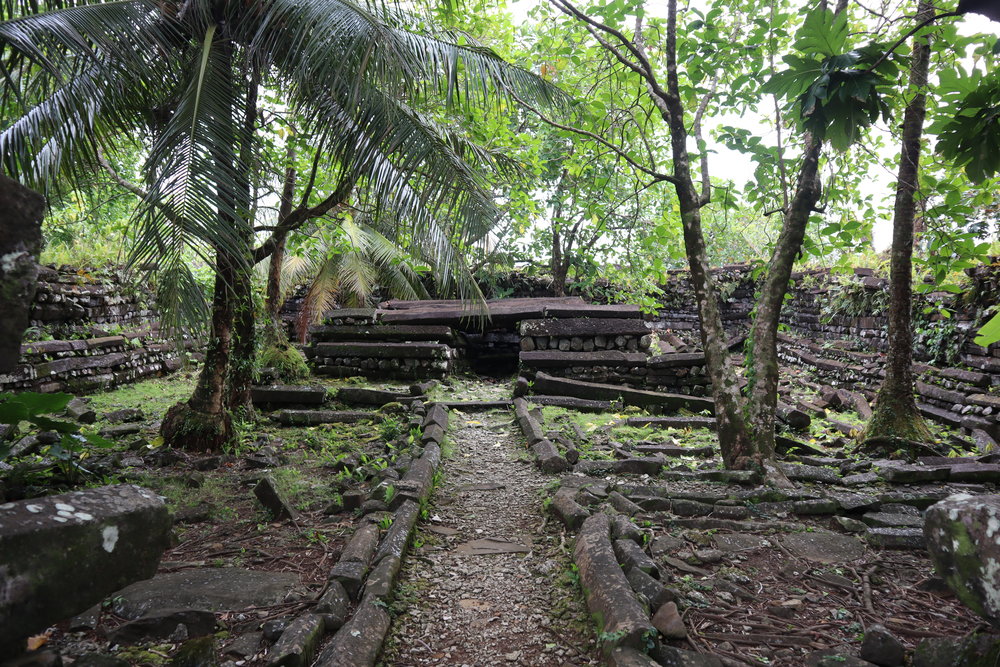
The central altar at Nan Madol
I did wish I had more time to sit atop the stone altar and contemplate my surroundings, but the whirlwind trip had to continue, and so I hurried back to the airport, bid farewell to the FSM, and embarked on the “true” Island Hopper.
The “True” Island Hopper to Honolulu
The onward journey on United Airlines Flight 155 can be described as “true” because it’s the twice-weekly service from Guam all the way to Honolulu, making stops in Chuuk, Pohnpei, Kosrae, Kwajalein, and Majuro. The aircraft simply stops on each island for between 30 minutes and an hour before taking off again.
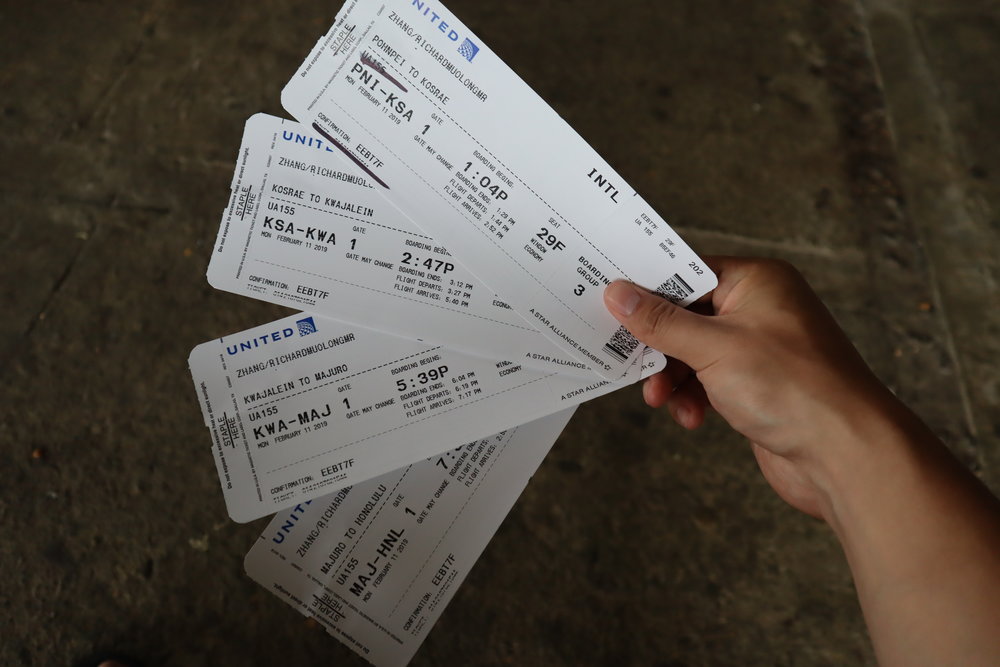
Boarding passes all the way to Honolulu
I was linking up with Flight 155 in Pohnpei, having previously flown on the various other flights that United operates between Guam, Chuuk, and Pohnpei. I’d be sitting onboard this very same Boeing 737 for the next 10 hours or so until Honolulu, but at least I’d have the opportunity to get off and stretch my legs at the various intermediate islands…
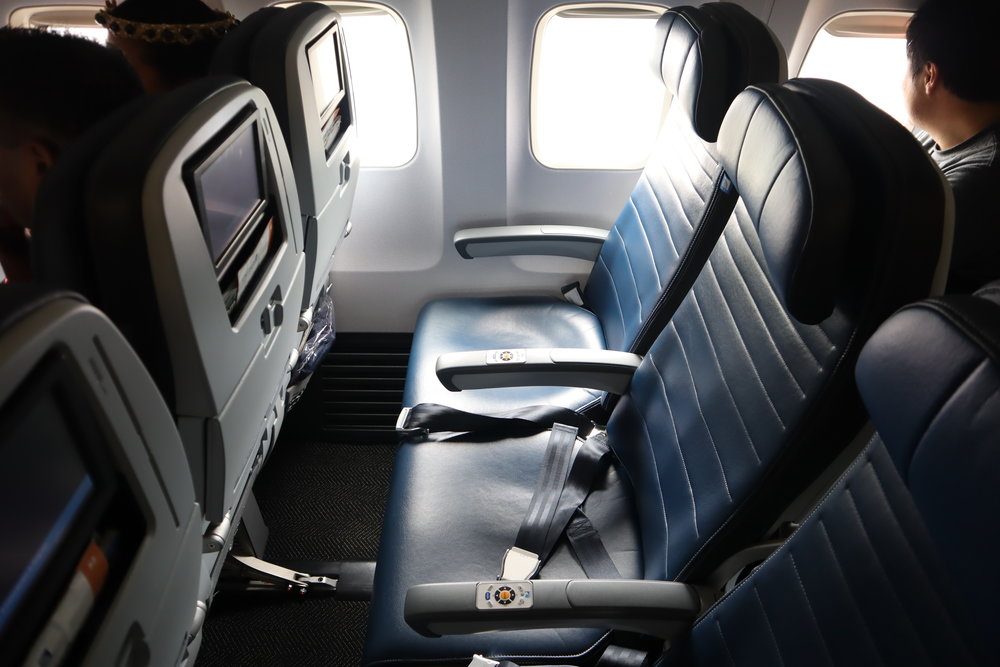
Home for the next 10 hours…
…or so I thought! You see, my Island Hopper flight turned out to be quite different than expected.
First off, an hour into the journey, we were supposed to touch down in Kosrae for the first stop. However, the island was stricken by tempestuous weather, so after initiating a go-around once, it was determined by the captain that a safe landing was impossible and we had to continue straight onto Kwajalein!
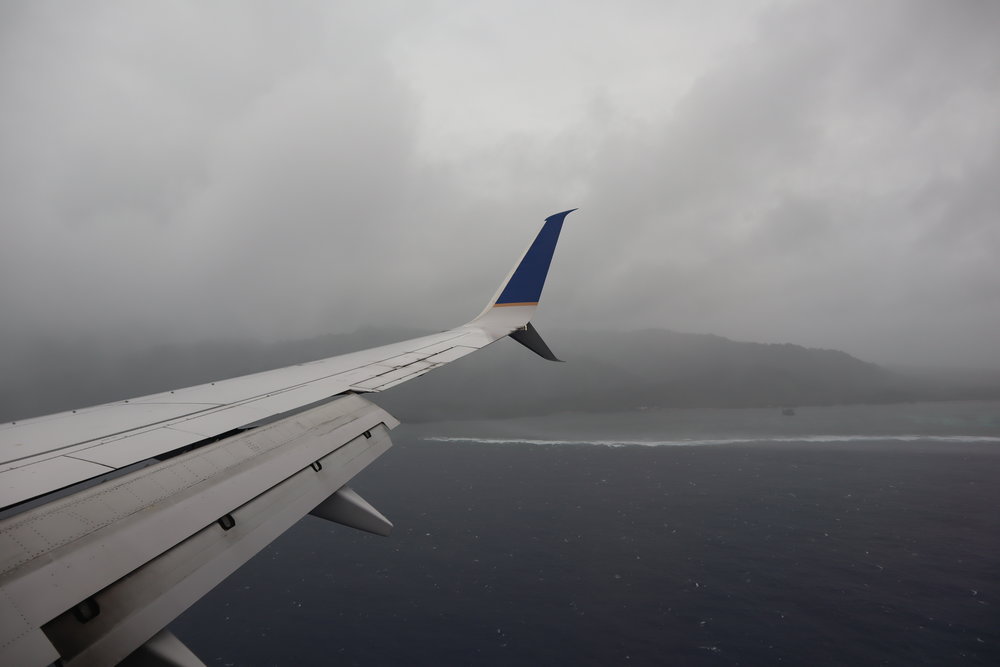
Bad weather on approach to Kosrae
Suffice to say, the passengers who were supposed to get off in Kosrae were pretty up in arms that we had skipped their island, but there was really nothing that could be done – weather is weather, and if we had continued circling around Kosrae, we wouldn’t have enough fuel to complete the entire journey.
You’d think that these passengers could deplane in Kwajalein and make alternate arrangements, but nope – since Kwajalein is a Marshall Islands territory with an active US military base on it, nobody who wasn’t scheduled to deplane here could do so.
In fact, you aren’t even allowed to take pictures of the runway here on “Kwaj”, as it’s affectionately known. Keen to document the journey, I discreetly took some pictures while the crew wasn’t watching, but – to my utter surprise – a fellow passenger snitched on me and I received an almighty lecture. Oops!
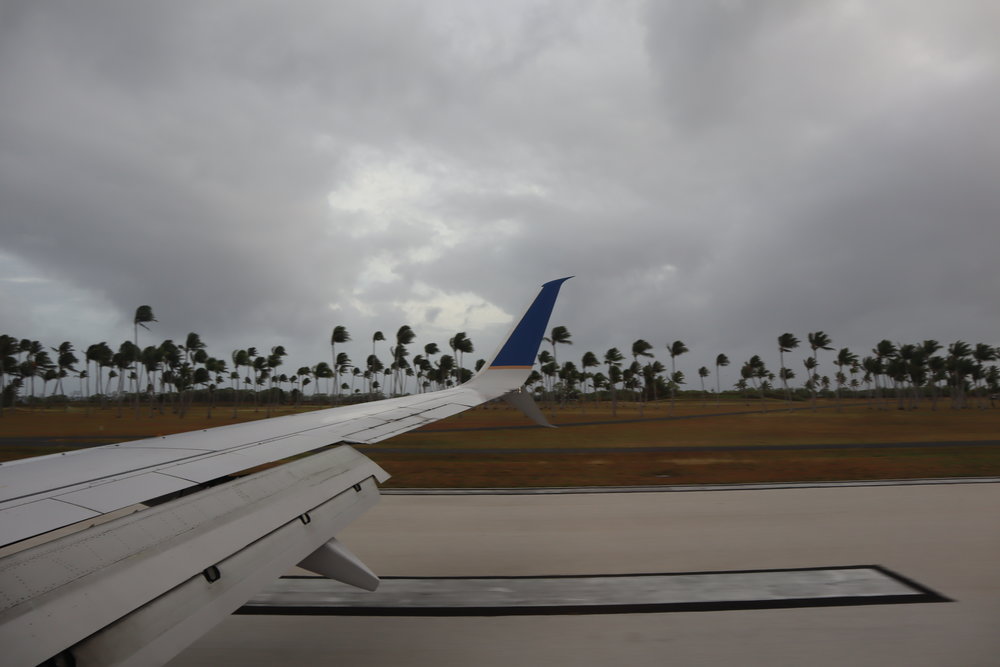
View on landing at Kwajalein
Anyway, it was then another one-hour hop up to Majuro, the capital of the Marshall Islands. Night had fallen by this point, and those poor Kosrae-bound passengers were finally able to get off here, presumably not to make it to their destination until the next day.

Taxiing Marshall Islands International Airport, Majuro
Frustratingly, because of the delays we had experienced up until this point, the crew instructed those of us who were purely transiting Majuro to stay on the plane, instead of being able to get off and stretch our legs. That means I was indeed going to be stuck on the plane for 10 hours straight!
I was starving at this point – the Island Hopper flights are loaded with minimal food rations, given the long duration of the journey and strict weight restrictions – and so I vowed to eat the biggest poke bowl I could find when I finally arrived in Honolulu.

Small sandwich served en route to Hawaii
From Majuro, it was a longer four-hour flight across the International Date Line to Hawaii. I spent this time napping on-and-off, working on a blog post, and just looking out at the night sky.
It was impossible to capture on camera, but the view of the stars was absolutely breathtaking here in the middle of nowhere in the Pacific Ocean. The image of the blinking red light on the wing of the United 737, set against the backdrop of an incredible starry night, is something I’ll remember for a very long time.
After what seemed like an eternity, we eventually landed in Honolulu, Hawaii at 4:30am on the very same calendar day that I had left Pohnpei (time zones can be quirky, you know).
Exhausted in body but not in spirit, I caught the early-morning city bus into town for some fresh poke, before heading back to the airport to catch up on sleep in the Priority Pass lounge.
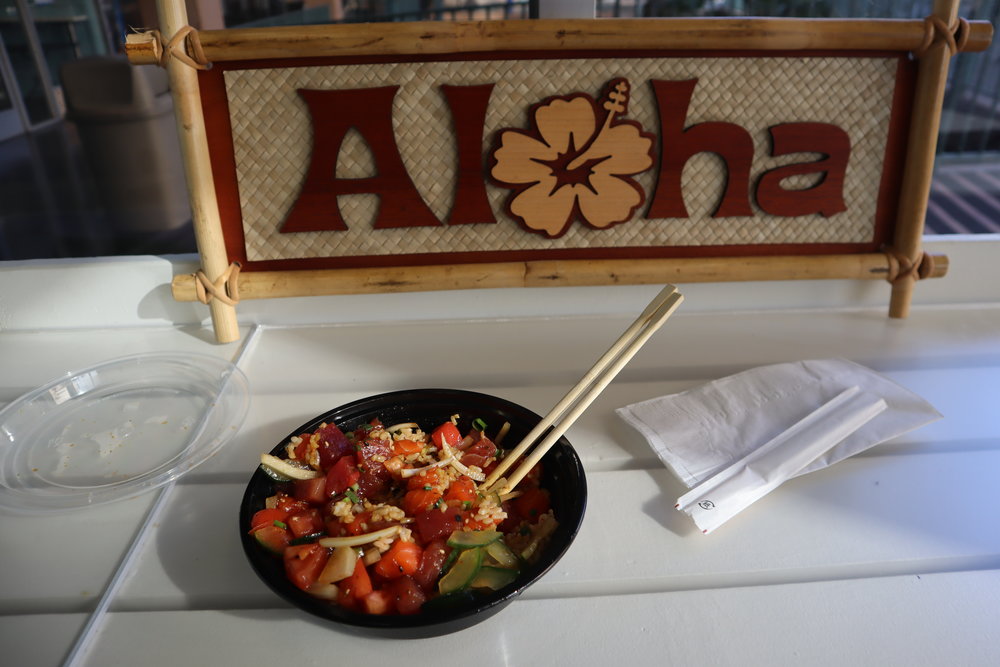
A poke bowl worthy of the journey
And finally, an unceremonious nine-hour flight in United economy to Newark would bring this almighty adventure to an end, but I did my best to make it comfortable by securing an empty row of three seats at the very back of the cabin. Who needs lie-flat business class when you can have lie-flat economy? 😉
Conclusion
As the plane slowly inched its way across the Pacific towards the US mainland, I had little to do besides look out into the aircraft cabin and reflect on the many things that this trip had taught me. I recounted the new friends I had made in various parts of the world, and I pondered about the new cultures I had gotten to know.
Most of all, I mulled over the sheer insanity that such a comprehensive round-the-world trip like this – one that had brought me to Ghana, Turkey, Australia, New Zealand, China, Guam, the FSM, and Hawaii – could be booked for just 160,000 Aeroplan miles in business class.
What a truly bizarre world we live in where that’s possible, isn’t it? This was a fruitful and rewarding trip of the highest order, and as it reaches its conclusion, I’m happy to say that my resolve to explore the world – by squeezing every drop of value out of the opportunities we have with Miles & Points – has never been stronger.




















Ricky fantastic, I’m getting ready to retire! I live Yyt! So I’m going to fly air miles to Boston because of the cheap taxes. Bos-fco-Venice-Zurich-Bos then home! 60,000 Aeroplan miles and very few tax grabs! Thanks for all your info! Happy Flying!????
Great post! I just returned from my mini round the world in business class with aeroplan YYZ – TPE-PNH-BKK-IST-ATH-ZRH-YYZ
Thanks for the play-by-play and update. I did not know about the Island hopper and ever since you mentioned it a few months ago I have had it on my bucket list to do as well. I just hope I have a bit better luck and am able to land on all the islands.
My wife and kids would kill me if I dragged them through this (not to mention the outbound part, even if it’s in Business/First class)
Good job Ricky!! taking one for the team and having fun for all of us!
When the time comes, I fully expect to convince my kids that this is normal!
Always a pleasure Jerry 😉
"I’m happy to say that my resolve to explore the world – by squeezing every drop of value out of the opportunities we have with Miles & Points – has never been stronger. " Zhang, Ricky, 2019 .
That’s a saying!!
Thanks for sharing your trip! I don’t think I can do these RTWs.
Lucky you only got a lecture. Another Chinese got a few years for taking military site photos. Granted, he entered a restricted area, areas was more sensitive, etc, etc